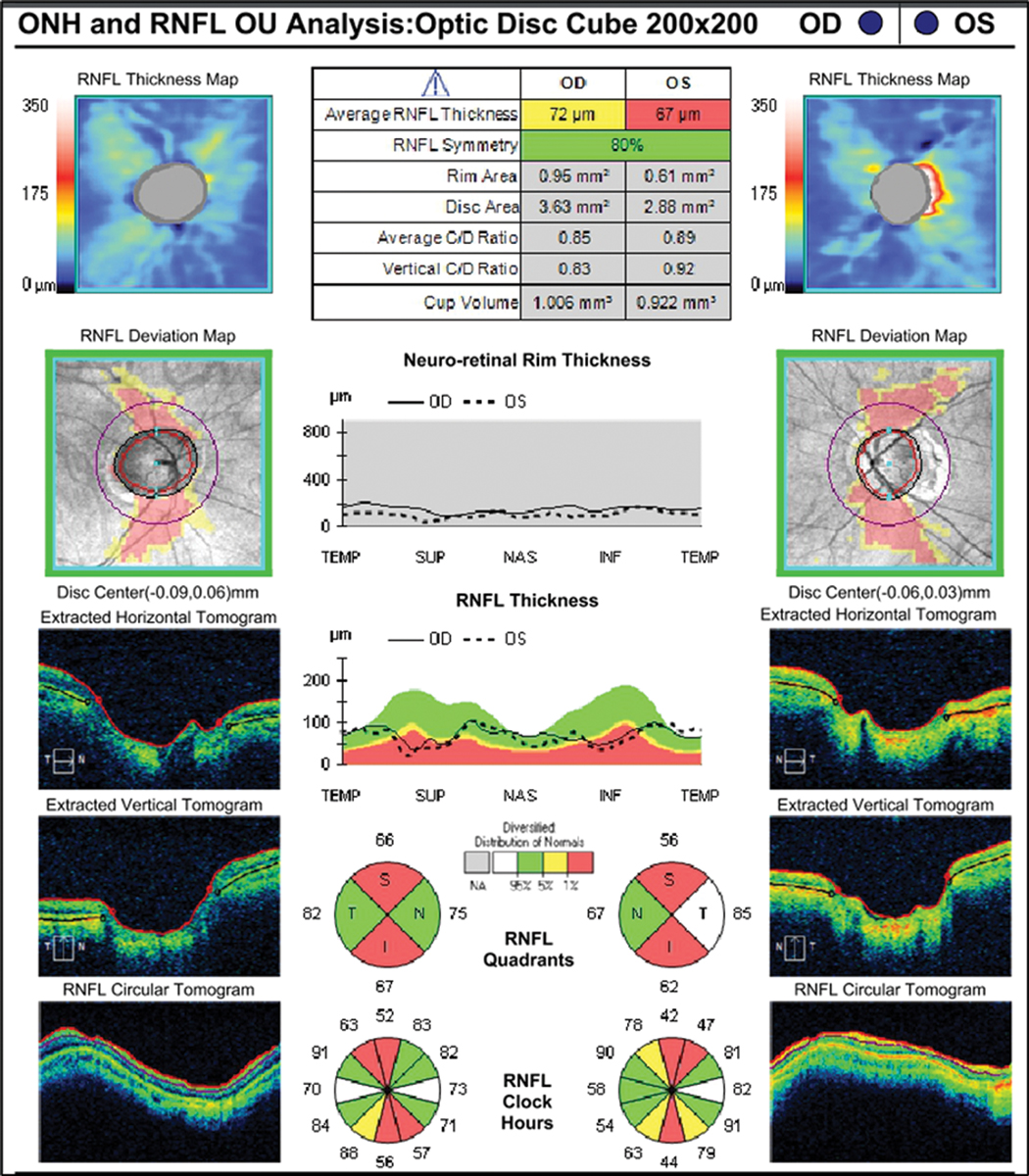 |
| Monitoring RNFL over time in patients at risk for Alzheimer’s might reveal thinning indicative of early disease (patient shown here is a high myope). Photo: Sarah Klein, OD. Click image to enlarge. |
A recent study validated the potential of OCT as a biomarker for cognitive function and a tool for detecting those at risk for Alzheimer's disease, which is increasing in prevalence around the world. Given that the retina shares many characteristics with the brain and is part of the central nervous system, researchers decided to observe the change in retinal nerve fiber layer (RNFL) and ganglion cell layer (GCL) thicknesses from childhood to adulthood, along with the change in cognitive performance, to identify a possible association.
The longitudinal cohort study included 865 patients born between 1972 and 1973. Cognitive performance (IQ, processing speed, perceptual reasoning and verbal comprehension) was assessed at ages seven, nine, 11 and 45. At age 45, RNFL and GCL thicknesses were also measured using OCT.
The data analysis revealed that a lower IQ during childhood and at age 45 was associated with thinner RNFL and GCL at age 45. Lower childhood IQ was associated with the following at 45 years: thinner mean RNFL, thinner RNFL in the nasal and inferior quadrants, thinner mean GCL thickness and thinner GCL in the following segments: temporal-superior, superior, nasal-superior, nasal-inferior, inferior and temporal-inferior.
A greater decline in processing speed from childhood to adulthood was also observed in patients with an overall thinner RNFL and a thinner RNFL in the temporal and inferior quadrants. Neither verbal comprehension nor perceptual reasoning was shown to be associated with any measure of RNFL or GCL.
The researchers concluded that the data suggests these OCT parameters show promise in detecting early signs of Alzheimer’s. “RNFL may be particularly sensitive to changes in processing speed by middle age,” they noted. “RNFL thinning could be a useful biomarker in identifying those experiencing the early stages of cognitive decline before global cognitive decline becomes apparent.”
Barrett-Young A, Ambler A, Cheyne K, et al. Associations between retinal nerve fiber layer and ganglion cell layer in middle age and cognition from childhood to adulthood. JAMA Ophthalmol. February 10, 2022. [Epub ahead of print]. |

